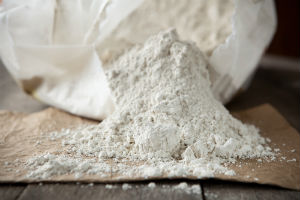5 Benefits of Diatomaceous Earth |  |
| 5 Benefits of Diatomaceous Earth Posted: 06 Aug 2014 08:00 AM PDT  Diatomaceous earth is a naturally-formed sedimentary mineral rock that may aid in the cleansing process, and research also suggests that this natural tool may help lower cholesterol and triglyceride levels, remove toxic metals, and fight harmful intestinal organisms. Diatomaceous earth is derived from the remains of diatoms, or oceanic unicellular algae. [1] Diatoms are over 30 million years old and are formed from the cementation of microscopic algae-like plant remains into the earth’s surface. These clay-like, chalky remains are usually found in the form of a thick, white, siliceous powder known as diatomaceous earth. [2]
Health BenefitsThe use of diatomaceous earth knows no bounds, and its many applications in the cosmetic, agriculture, and cleansing industries have been extensively investigated by researchers for years. Here are some of the many researched benefits of diatomaceous earth. 1. Natural Source of SilicaFood-grade diatomaceous earth is composed of approximately 85% silica. [3] This important trace mineral is required by tendons, cartilage, blood vessels, and bones. [4] The nutrient even contributes to almost every vital organ, including the heart, liver, and lungs. Food was the primary source of naturally-occurring silica in the past, yet modern farming practices have depleted the soil of this vital nutrient. It is suggested, but not scientifically substantiated, that only 1/3 of the silica we need is available in natural, plant-based foods. 2. BeautyBecause diatomaceous earth is a strong abrasive, it is often used as a toothpaste and facial exfoliator. The process of exfoliation is important in skin care as it helps to remove dead skin cells that may give the appearance of tired, worn-out skin. The product's natural silica content is also necessary for healthy skin, teeth, hair, and nails, and the product is often touted as a potent beauty mineral. 3. Reduces Heart Disease RiskResearch has also shown that oral intake of food-grade diatomaceous earth significantly lowers cholesterol and triglyceride levels in humans, reducing the risk of heart disease. [5] Nutrients such as silicon, calcium, sodium, magnesium, iron, and other trace minerals are available in diatomaceous earth, giving rise to a practically endless supply of health benefits. Most of these nutrients aid in the building and repair of muscles and bones and also support proper energy levels. 4. Natural PesticideOne of the most commonly employed uses for diatomaceous earth include its effectiveness as a natural insecticide. Studies indicate that this clay-like powder can kill harmful insects that threaten crops and home life. [6] Due to the incessant use of pesticides in conventional agricultural, many insects have become resistant to chemical insect deterrents. This organic pest control method is helpful for reducing the amount of environmental toxins you and your family are exposed to on a daily basis. 5. Internal CleanserDiatomaceous earth acts as a mild abrasive topically as well as internally, helping to remove intestinal invaders and other harmful organisms from the digestive tract. As an internal cleanser, diatomaceous earth may aid cleansing by supporting regularity and may also assist in removing heavy metals. [7] In animal models, studies and general observations have shown diatomaceous earth to be very successful in ridding animals of harmful organisms. Food-grade and untreated/unheated diatomaceous earth can be placed in the feed of livestock to help discourage fleas and other harmful parasites. [8] Make sure that all diatomaceous earth is labeled “food grade” and has been untreated and unheated. What are your favorite uses for diatomaceous earth? Let us know your experience with this powerful product by sharing with us in the comments! -Dr. Edward F. Group III, DC, ND, DACBN, DCBCN, DABFM References:
The post 5 Benefits of Diatomaceous Earth appeared first on Natural Health & Organic Living Blog. |
| You are subscribed to email updates from Natural Health & Organic Living Blog To stop receiving these emails, you may unsubscribe now. | Email delivery powered by Google |
| Google Inc., 20 West Kinzie, Chicago IL USA 60610 | |
No comments:
Post a Comment